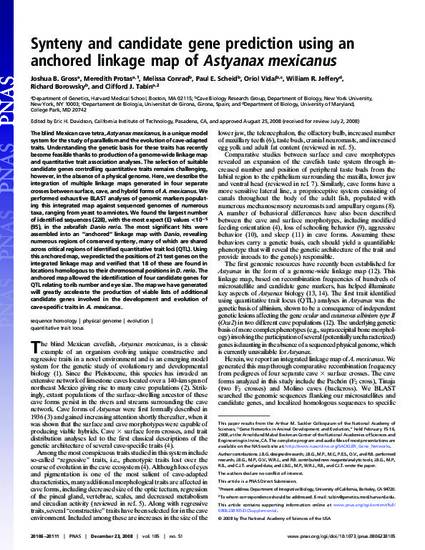
The blind Mexican cave tetra, Astyanax mexicanus, is a unique model system for the study of parallelism and the evolution of cave-adapted traits. Understanding the genetic basis for these traits has recently become feasible thanks to production of a genome-wide linkage map and quantitative trait association analyses. The selection of suitable candidate genes controlling quantitative traits remains challenging, however, in the absence of a physical genome. Here, we describe the integration of multiple linkage maps generated in four separate crosses between surface, cave, and hybrid forms of A. mexicanus. We performed exhaustive BLAST analyses of genomic markers populating this integrated map against sequenced genomes of numerous taxa, ranging from yeast to amniotes. We found the largest number of identified sequences (228), with the most expect (E) values <10−5 (95), in the zebrafish Danio rerio. The most significant hits were assembled into an “anchored” linkage map with Danio, revealing numerous regions of conserved synteny, many of which are shared across critical regions of identified quantitative trait loci (QTL). Using this anchored map, we predicted the positions of 21 test genes on the integrated linkage map and verified that 18 of these are found in locations homologous to their chromosomal positions in D. rerio. The anchored map allowed the identification of four candidate genes for QTL relating to rib number and eye size. The map we have generated will greatly accelerate the production of viable lists of additional candidate genes involved in the development and evolution of cave-specific traits in A. mexicanus.
Copyright © 2003 The Author(s)
Available at: http://works.bepress.com/meredith-protas/9/
